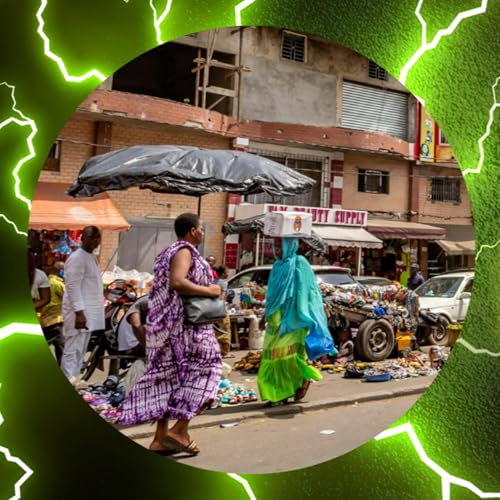
Cocoa, Conflict, and Capital—The Economic Story of Côte d'Ivoire W/ Yohann Coulibaly
No se pudo agregar al carrito
Add to Cart failed.
Error al Agregar a Lista de Deseos.
Error al eliminar de la lista de deseos.
Error al añadir a tu biblioteca
Error al seguir el podcast
Error al dejar de seguir el podcast
-
Narrado por:
-
De:
Today we have Supreeth Nagella, Arib Malik, and Yohaan Coulibaly discussing Cote d'Ivoire's economy and future. This is an absolute banger, so watch till the very end. 🔥 II. Civil War & The Economic CollapseNo discussion of Côte d'Ivoire’s economy is complete without addressing its two civil wars—in 2002 and again in 2010.The roots of conflict were ethnic and political—but they were also economic.During the boom years of cocoa, vast numbers of migrant workers from Burkina Faso, Mali, and other Sahelian states came to Côte d'Ivoire to farm. Over time, disputes over land ownership, citizenship, and access to economic opportunity boiled over. When the price of cocoa crashed in the late 1990s, and with growing dissatisfaction over corruption and inequality, the fragile peace unraveled. In 2002, civil war broke out, splitting the country in two. The economy shrank by over 15%, investor confidence evaporated, and cocoa production became both a target and a tool of warfare.Militias seized cocoa routes to fund their operations. Child labor and smuggling spiked. The Ivorian economy—once dubbed the “African miracle”—sputtered into chaos.But even during the darkest days, cocoa remained central. In fact, the fight to control the cocoa belt was often more economically motivated than ideologically driven.This segment explores:How natural resource wealth can fuel—not prevent—conflictWhy cocoa fields became strategic military targetsThe international community’s (and chocolate industry’s) mixed responseHow post-conflict reconstruction relied heavily on restoring cocoa exports📈 III. Capital Returns: Recovery, Reforms, and RisksAfter the second civil war ended in 2011 and President Alassane Ouattara took office, Côte d'Ivoire entered a period of relative stability and rapid economic growth.GDP growth averaged 7–8% annually in the 2010s, driven by:Public infrastructure projects (roads, ports, electricity)Investment in agribusiness and miningFinancial services and urbanization in AbidjanInternational support from the IMF and World BankBut beneath the headlines of “Africa Rising,” many old patterns remained.📉 Cocoa remained over 40% of exports📉 Poverty reduction was uneven📉 Youth unemployment remained high, especially in northern regions📉 Price volatility and climate threats loomed over farmersWe examine how:The government created a cocoa regulator, the Conseil du Café-Cacao, to stabilize pricesEfforts to encourage domestic chocolate manufacturing largely failed due to infrastructure gaps and trade barriersChinese and Gulf capital began entering the port and logistics sectorsAusterity measures and growing debt challenged long-term sustainabilityIs the growth real—or just another cycle?🧒🏾 IV. Child Labor, Exploitation, and Ethics in the Cocoa ChainOne of the most controversial aspects of Côte d'Ivoire’s cocoa economy is the use of child labor.Despite international outcry and initiatives like the Harkin–Engel Protocol, recent studies suggest over 1.5 million children still engage in hazardous work on cocoa farms in West Africa.We explore:The role of poverty and weak enforcement in perpetuating child laborHow multinational chocolate companies navigate (or exploit) weak regulationThe rise of “ethical chocolate” and whether certifications like Fair Trade and Rainforest Alliance actually workInterviews from field investigations and academic research on cocoa’s labor conditionsWhy corporate social responsibility often fails to move beyond PRAt the heart of this segment is a question: Can you love chocolate and care about justice?🌍 V. Cocoa and Climate: A Crisis BrewingClimate change is not an abstract threat for Côte d'Ivoire—it’s an existential one.🔺 Rising temperatures and erratic rainfall are shrinking the cocoa belt🔺 Soil degradation and pest outbreaks are increasing costs for farmers🔺 The expansion of cocoa has contributed to over 80% deforestation in just a few decadesWe explore how:Deforestation for cocoa is threatening biodiversity.


